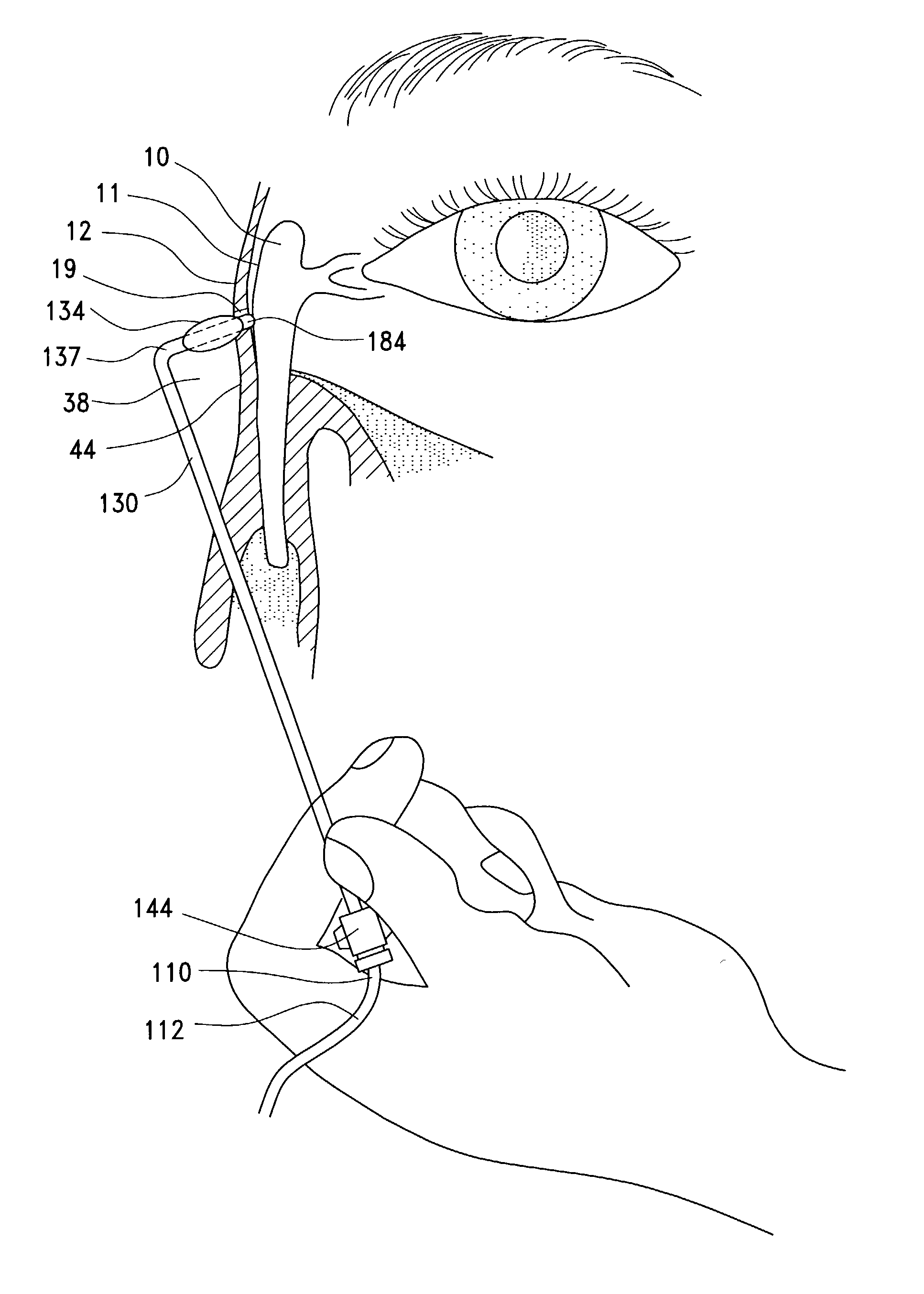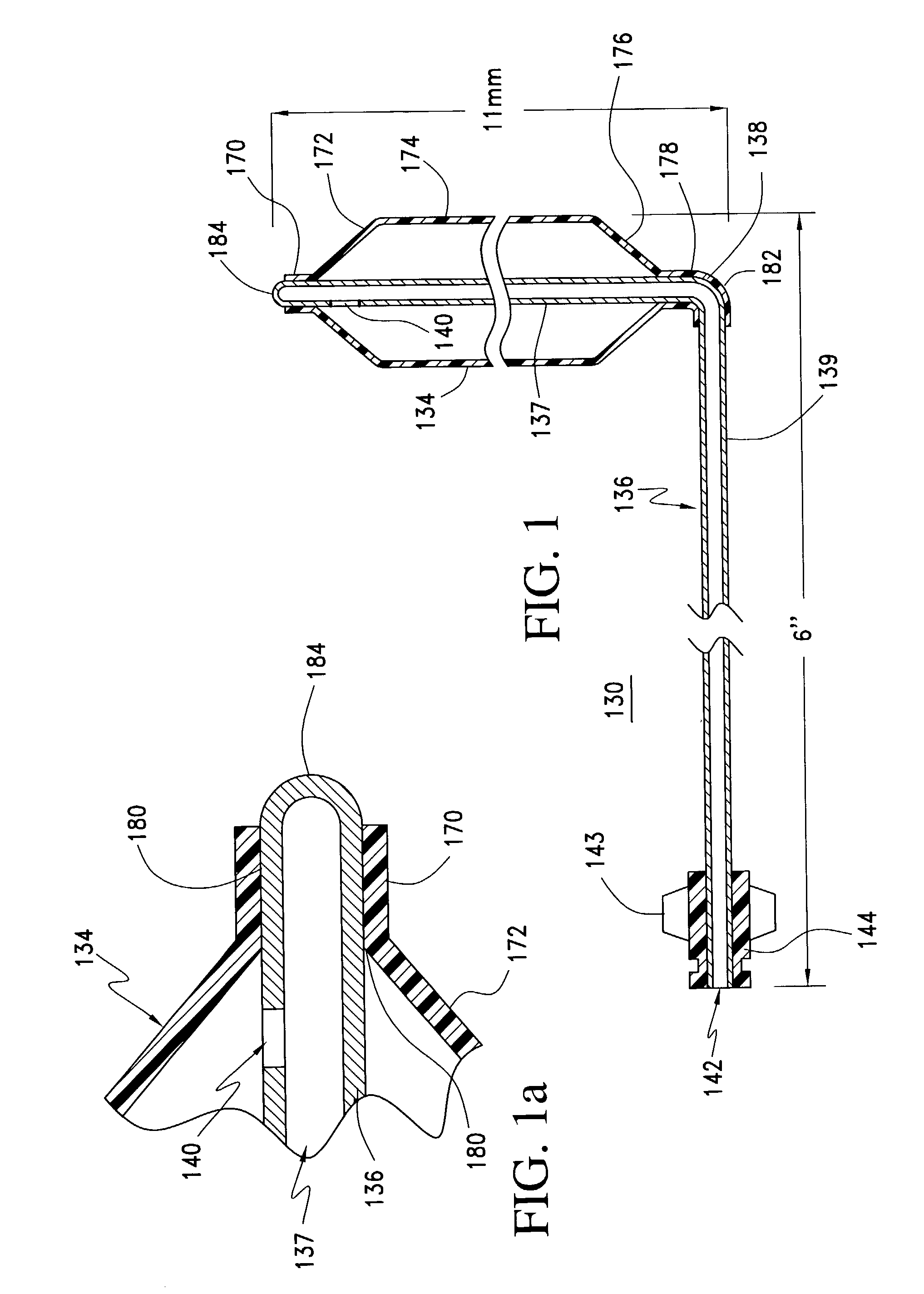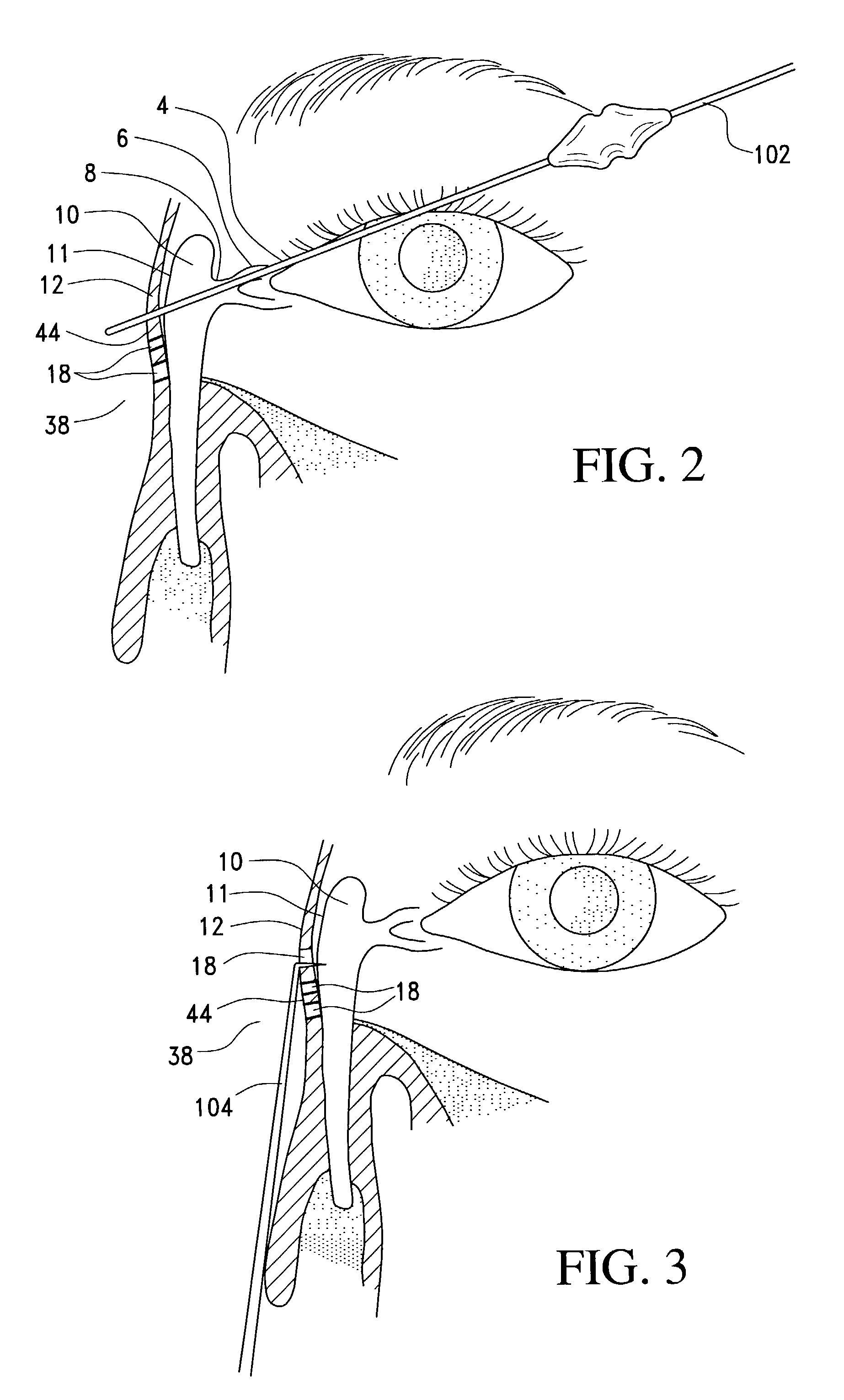Transnasal method and catheter for lacrimal system
a transnasal method and lacrimal system technology, applied in the field of transnasal method and lacrimal system treatment, can solve the problems of no medical treatment for acquired nasolacrimal duct obstruction, significant morbidity, swelling of the lacrimal sac, etc., to avoid the trauma associated with insertion through the delicate canaliculi, avoid trauma, and high surgical success rate
- Summary
- Abstract
- Description
- Claims
- Application Information
AI Technical Summary
Benefits of technology
Problems solved by technology
Method used
Image
Examples
Embodiment Construction
[0025]As shown in FIGS. 1 and 1a, a balloon catheter 130 of the invention is assembled from a tube 136, preferably a stainless steel hard tempered hypotube which has a circular bend 138 of 0.13″ radius such that distal segment 137 is oriented 70° to 115°, preferably 90°, to proximal segment 139. The distance from the distal tip 184 of distal segment 137 to the outer wall of proximal segment 139 of hypotube 136 is 4 mm to 30 mm, preferably 14 mm, as shown in FIG. 1. The distal tip 184 of the hypotube 136 is closed, whereas the proximal end 142 is open. However, the lumen of tube 136 may be closed in the distal segment 137, up to 10 mm from the distal tip 184 allowing the distal tip 184 to remain open for engagement with a probe, as shown in FIGS. 6 and 7. The proximal end 142 of hypotube 136 is inserted into a mold for forming luer 144. Heated plastic is injected into the mold to form luer 144 attached to proximal end 142. The inner diameter of the luer 144 matches the external diame...
PUM
 Login to View More
Login to View More Abstract
Description
Claims
Application Information
 Login to View More
Login to View More - R&D
- Intellectual Property
- Life Sciences
- Materials
- Tech Scout
- Unparalleled Data Quality
- Higher Quality Content
- 60% Fewer Hallucinations
Browse by: Latest US Patents, China's latest patents, Technical Efficacy Thesaurus, Application Domain, Technology Topic, Popular Technical Reports.
© 2025 PatSnap. All rights reserved.Legal|Privacy policy|Modern Slavery Act Transparency Statement|Sitemap|About US| Contact US: help@patsnap.com



